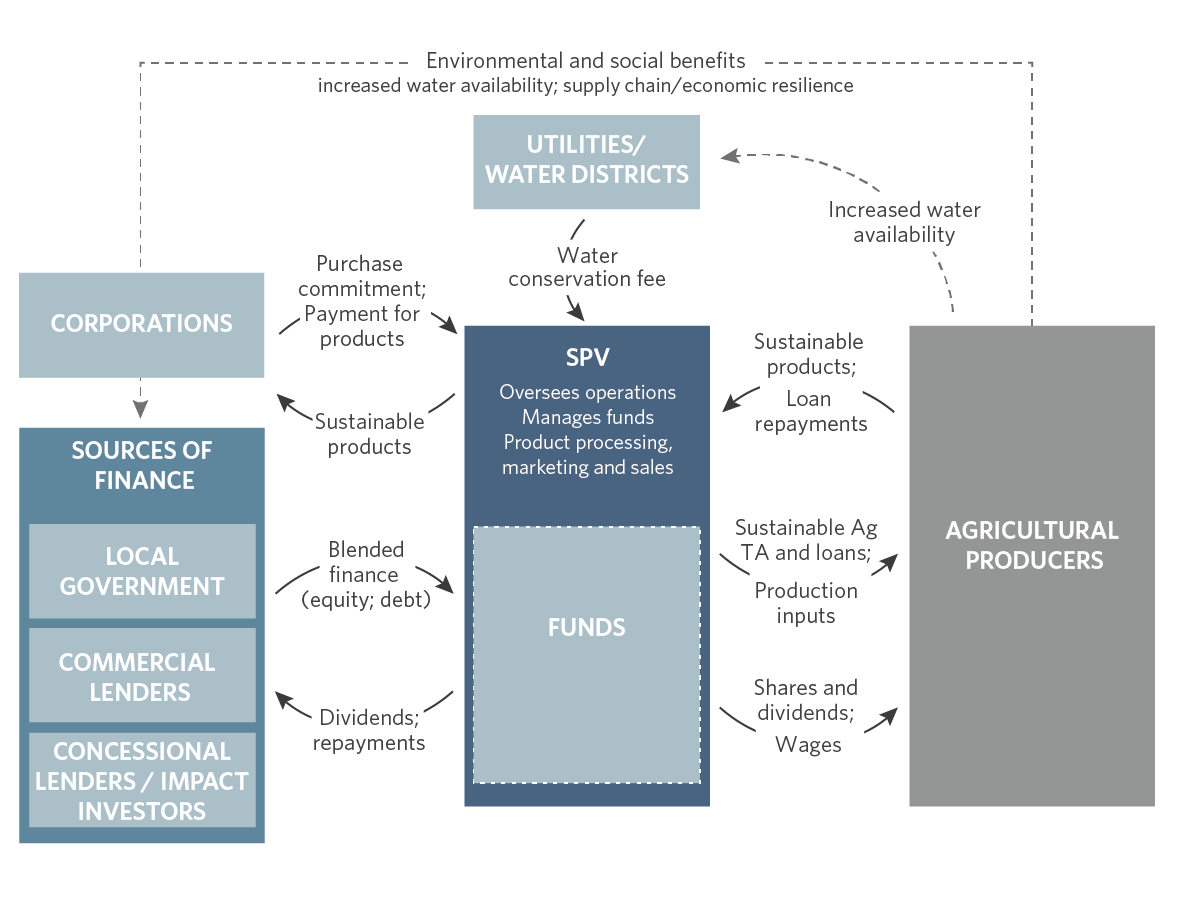This publication is CPI’s analysis of Monetizing Water Savings, an innovative climate finance instrument endorsed by the Global Innovation Lab for Climate Finance (the Lab). CPI serves as the Lab’s Secretariat. Each instrument endorsed by the Lab is rigorously analyzed by our research teams. High-level findings of this research are published on each instrument, so that others may leverage this analysis to further their own climate finance innovation.
Inefficient water use by agricultural producers in water-stressed regions of emerging markets is increasing the vulnerability of smallholder rural farmers in arid and semi-arid areas, while also affecting regional water supply and food production security.
Improving agricultural irrigation practices has enormous potential to address water crises, but farmers in developing and emerging countries often lack the right resources, business models to participate in, or incentives to implement them.
Monetizing Water Savings (MWS) aims to provide smallholder agricultural producers, with the necessary incentives and resources to increase their productivity while increasing water efficiency, improving soil quality and increasing the climate resilience of already water-stressed regions.
MWS is a novel, collaborative approach to improve economic outcomes for farmers, create resilient supply chains and increase water efficiency by using “pay for performance” to accelerate sustainable agriculture practices in water-stressed regions
INNOVATION
MWS coordinates the efforts of government, corporations and agricultural producers to address irrigation inefficiencies in highly water-stressed regions of emerging economies.
MWS will establish an internal cooperative structure to aggregate multiple agricultural producers and facilitate the adoption of modern equipment, sustainable agriculture practices and Nature-based Solutions (NBS). This cooperative structure will allow farmers to have a stake in the initiative, while gaining a dedicated selling channel for their products to an anchor corporate partner.
For the first time in an emerging country’s water sector, MWS will also design a “pay for performance” scheme to monetize the benefits that corporates, water utilities and other stakeholders may accrue from increased long-term water security and availability.
IMPACT
Proposed by the FEMSA Foundation and World Resources Institute, the pilot project targets water efficiency of 4,000 grain producers across an area of 20,000 hectares in Guanajuato, the second highest water-stressed region in Mexico.
Implemented in conjunction with its regional partners, the MWS model is projected to increase farmers’ yields by approximately 30%, while reducing water consumption by 3,500 cubic meters per hectare per year, equivalent to saving seven Olympic-sized swimming pools of water every year.
Additional benefits include improving biodiversity, increased resilience to drought and the potential transfer of a portion of the water savings to water utilities and consumers in nearby urban centers.
DESIGN

MWS is envisioned as a Special Purpose Vehicle responsible for aggregating multiple agricultural producers and facilitating the adoption of new equipment and sustainable agriculture practices, that will increase farmers’ productivity while significantly reducing their water use and associated costs.
MWS will provide loans to farmers to purchase efficient irrigation systems, and introduce conservation agriculture practices. Loan terms will offer favorable combinations as compared to the financing options normally available and may vary based on the extent of conservation agreed by the farmers. MWS will also provide technical assistance to identify the most promising practices, maintain new equipment and NBS, monitor water usage, and improve overall water-efficient productivity.
An anchor corporate partner will help to secure the demand of crops produced by farmers through a purchase commitment, thus achieving a reliable, sustainable and resilient supply chain.
Along with the sale of products to the corporate, once operational the model unlocks two additional revenue streams:
1. Repayments of farmer loans through increased crop revenues, reduced costs and improved access to markets.
2. Monetization of systemic water savings, from water utilities or other public institutions through a water conservation fee paid to the SPV and calculated with a “pay for performance” approach.

